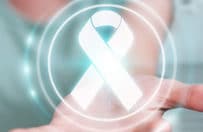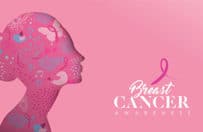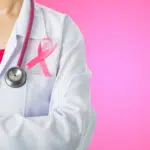What is National Mammography Day?
National Mammography Day Related Holidays



History of National Mammography Day
National Mammography Day timeline
Albert Solomon, a surgeon in Berlin, used an x-ray machine to see breast cancer in 3,000 mastectomy samples.
Robert Egan, a Houston-based radiologist, introduced specialized film for mammograms resulting in better imagery and details.
Xeromammography was commercially introduced as a method of providing better image quality of the chest wall.
Congress passed legislation providing funding for annual mammography screening as a Medicare benefit.
The FDA, the regulating agency for mammography, approved the first full-field digital mammography system.
National Mammography Day FAQs
When is Breast Cancer Awareness Month?
Breast Cancer Awareness Month is celebrated annually during the month of October. Take the time to get educated on Breast Cancer and learn what you can do to decrease your chances of being diagnosed.
Are mammograms free?
Depending on your health care plan, you might not have to pay a deductible to receive a mammography. Also, some Planned Parenthood affiliates have free mammography vans for low-income and uninsured women.
Are mammography exams painful?
Some women feel pain during the procedure while others feel nothing at all. This discomfort of the process comes from the fact that the mammography unit has to compress the breast in order to evenly distribute the tissue.
How to Observe National Mammography Day
Make your mammogram appointment
If you've been procrastinating out of fear (or simply denial that you actually are 40), set aside time to make that appointment on October 18. Keep in mind that out of every 1,000 women who get screened, about 100 are asked to do another mammography or allow ultra sound imagery. 20 women will be referred for a biopsy and only five are diagnosed with breast cancer. Even with an abnormal mammogram, there's a high chance cancer has not been detected.
Do a breast self-exam
Now's the time to renew your commitment to monthly self-exams. Call your doctor or nurse practitioner for an appointment to show you the correct way to do one. You can also do an online search for pictures or infographics that will walk you through the process. After all, it's your body — show it some love.
Wear some pink
Pink is the official color of breast cancer awareness, which includes National Mammography Day. Proudly wear your pink ribbon in honor of a friend, loved one, or in awareness for breast cancer in general. It may seem like a little thing, but for breast cancer survivors, it means they're not alone in their struggle.
5 Things You May Not Know About Breast Cancer
Know your risk factors
Yearly and biennially mammograms can be dangerous for women under 40, which is why it is recommended to only begin the process once this age minimum is reached. Once a women reaches the age of 40, the benefits of mammograms far outweigh the risks.
Mammograms have some limitations
If you have dense breast tissue, a traditional mammogram may have trouble detecting breast cancer.
Understand what they do
Mammograms are important for the race to early detection; however, they do not prevent breast cancer.
3D mammograms see through dense breasts
3D mammography, or tomosynthesis, is the most modern screening tool for breast cancer detection, allowing physicians to access better images of dense breast tissue than with traditional machines.
You can get screened with implants
If you have breast implants, they won't hinder a physicians view of your natural tissue.
Why National Mammography Day is Important
Mammograms are only once a year or every two years
With annual and biennial mammograms, women over age 40 promote their own self-care. Mammograms are non-invasive x-ray images of each breast that doctors review for anomalies that may indicate cancer. Unfortunately, many women are afraid to make their mammogram appointments for fear of radiation and breast discomfort during the exam. But fear not because the procedure takes only about 20 minutes.
Mammograms are extremely effective
Early detection screening has successfully reduced the U.S. breast cancer mortality rate by almost 40 percent according to the National Cancer Institute. That once-a-year mammogram is so effective that it can reveal breast changes up to two years before either a patient or their doctor can feel them.
Mammograms don't require a prescription
In most states, you don't need a doctor's permission to make your mammogram appointment. As long as you are over age 40, you can refer yourself to a facility. Make sure that facility is certified by regulating agencies including the FDA (Food and Drug Administration). Bring copies of previous mammograms with you, especially if you are using this facility for the first time.
National Mammography Day dates
| Year | Date | Day |
|---|---|---|
| 2024 | October 18 | Friday |
| 2025 | October 17 | Friday |
















